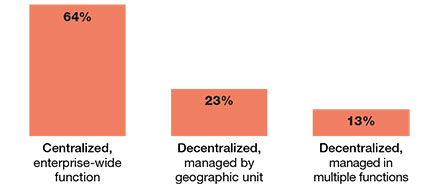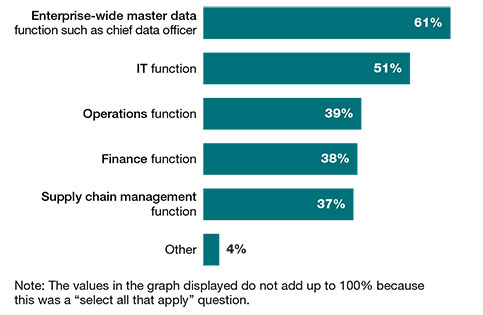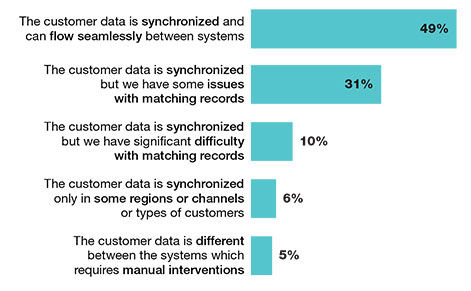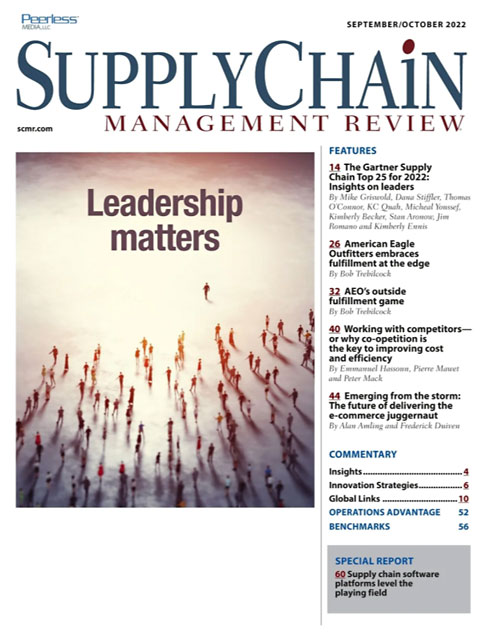Sorry, but your login has failed. Please recheck your login information and resubmit. If your subscription has expired, renew here.
September-October 2022
Once again, it’s time for Gartner’s Top 25 supply chains, the annual list of the 25 supply chains that have made it to the top, plus five Masters that have consistently outperformed year after year. You can read the article, along with some web-only material on scmr.com, to find out what it takes to become a supply chain leader. Last year, I was struck by how the leaders were embracing ESG, or Environmental, Social, & Governance. That has only been reinforced in this year’s report. In fact, ESG has been on the agenda of every event I’ve attended this year, including the keynote address at this year’s ISM conference. Whatever is the… Browse this issue archive.Need Help? Contact customer service 847-559-7581 More options
With so much attention paid over the last two years to the supply chain, it can be easy to overlook the larger organizational processes in which it is involved. One is the order-to-cash process, which stretches end-to-end from receiving customer orders to getting paid for the goods or services. With multiple functions involved in this process, it can be a challenge for organizations to ensure efficiency and effectiveness.
In a 2021 APQC survey of global, cross-industry professionals, 76% of respondents rated their order-to-cash process somewhat or very ineffective. This leaves significant room for organizations to improve this process that makes an impact on a large part of the enterprise.
Many of these organizations are looking to data as a starting point for improving their order-to-cash process. In APQC’s survey, 56% of respondents indicated that improving the quality and management of master data is one of the next improvements they plan to make for the order-to-cash process. This is a logical next step given that master data management aims to organize and synchronize data on customers, suppliers and products from across the enterprise.
In its research on leading practices for master data management, APQC has found that centralized data management, strong processes for ensuring data quality and assigning the right business unit to manage data has led to improved outcomes for the order-to-cash process.
Related Infographic: Factors for improved master data management
Foundation of data governance
An essential component of an effective master data management program is clear data governance. According to APQC’s survey, a majority of organizations say their master data is managed by an enterprise-wide function (Figure 1). However, 36% indicate management at their organizations is decentralized to some degree.
Figure 1: How master data is managed in the organization

Source: APQC
Decentralized master data management can undermine an organization’s efforts to maintain high quality, clean data. Although it may seem logical to manage data based on geography or function to meet the needs of these areas, it introduces the potential for varying management practices across the enterprise. This in turn reduces the likelihood that master data management would aid the organization in improving its end-to-end order-to-cash process.
Similarly, when asked which function owns responsibility for master data management, over 60% of organizations say an enterprise-wide master data function has responsibility (Figure 2). Yet many organizations have multiple functions responsible for master data management, with just over half also indicating that IT has responsibility.
These survey results should provide some caution to organizations regarding the systems they create for ownership of master data management. Order-to-cash relies on high quality data that is consistent throughout each step of the process. The more functions owning responsibility for master data, the higher the chance that data irregularities can affect the order-to-cash process.
Figure 2: Function in the organization that owns MDM responsibility

Source: APQC
APQC’s research on leading organizations reveals that those with master data management owned by an enterprise-wide function (such as a chief data officer) perform better than organizations that do not. They achieve lower days sales outstanding and have a higher percentage of orders delivered on-time and in-full. This is most likely attributable to the consistency and visibility provided by a centralized, enterprise-level governance.
Necessary data quality
Governance and ownership of master data management are only two factors for ensuring high quality, consistent master data available within the organization. Organizations must also enact processes to ensure ongoing data is synchronized and can flow seamlessly between systems within the enterprise.
Figure 3: Master data consistency from sales to order to invoicing

Source: APQC
As shown in Figure 3, nearly half of organizations surveyed by APQC say their processes for customer data meet these criteria. However, 41% have issues with matching records despite having customer data synchronized.
For these organizations, the challenges with the flow of data likely originate from a lack of consistent and effective data curation and maintenance. Perhaps tellingly, there is no standard way among respondents to define data quality. When asked to identify which data quality requirements they have set for error-free orders, over half of respondents to APQC’s survey indicated timeliness, validity, completeness and consistency. Just over 40% of respondents also indicated integrity.
The fact that no data requirement was clearly dominant among organizations shows the uncertainty among organizations of how to determine priority requirements for their data. Half of organizations surveyed by APQC report issues with their data not being consistent, effectively curated or maintained. As a starting point, organizations can use past data performance to select three priority requirements. They can then closely monitor their data’s adherence to those requirements to ensure a flow of data across the enterprise.
The key to a consistent, seamless flow of master data is to consistently apply strong processes for ensuring master data accuracy. Data from APQC’s Open Standards Benchmarking research shows that almost every organization has a process for ensuring the accuracy of their supplier master data. This includes assigning ownership for each data element and automating processes to help identify potential errors.
Among organizations with customer data synchronized and flowing seamlessly from sales to order to invoicing systems, nearly 75% report having enterprise-wide master data ownership with one owner such as a chief data officer. The implications for data inaccuracy extend beyond the need for manual interventions to enable the transfer of data between systems. Inaccurate information can degrade forecast accuracy because the enterprise does not have a single version of the truth for any of the activities within the order-to-cash process.
Improvement through master data
Organizations tackle master data management in various ways. For one large healthcare organization studied by APQC, the solution was to create a supply chain data management program. As part of the program, it aligned its business processes and strategies with its data management strategy.
The organization adopted centralized data ownership and developed documentation with guidance for master data management. It also implemented data management and analytics tools, as well as a corporate process that included related governance, training and data quality standards. The organization was successful in its efforts. The result was that it streamlined data governance and reduced rework, business disruptions, and supply chain cycle times.
Another example is IBM’s efforts to improve its quote-to-cash process using master data management. As part of this transformation, IBM named a chief data officer responsible for master data management, created a taxonomy to standardize product master data, adopted an enterprise-wide data repository and created teams of data architects. As a result of its efforts, IBM was able to achieve significant improvements to its quote-to-cash process, especially regarding cash flow, productivity, cycle time, ROI and seller satisfaction.
Ensure program sustainability
Many organizations have identified master data management as a key component to improving their order-to-cash processes. Success in master data management requires organizations to have centralized data governance and clear guidelines and processes for ensuring data accuracy.
The order-to-cash process is one that presents a compelling case for successful master data management. It relies on high-quality data that flows seamlessly from one end of the process to the other. To ensure that it has a sustainable data management program, an organization should not view master data management as a process to be improved once, but rather an effort for continuous evaluation and improvement through clear governance and attention. jjj
About APQC
APQC helps organizations work smarter, faster, and with greater confidence. It is the world’s foremost authority in benchmarking, best practices, process and performance improvement, and knowledge management. APQC’s unique structure as a member-based nonprofit makes it a differentiator in the marketplace. APQC partners with more than 500 member organizations worldwide in all industries. With more than 40 years of experience, APQC remains the world’s leader in transforming organizations. Visit us at apqc.org and learn how you can make best practices your practices.
SC
MR
Sorry, but your login has failed. Please recheck your login information and resubmit. If your subscription has expired, renew here.
September-October 2022
Once again, it’s time for Gartner’s Top 25 supply chains, the annual list of the 25 supply chains that have made it to the top, plus five Masters that have consistently outperformed year after year. You can read… Browse this issue archive. Access your online digital edition. Download a PDF file of the September-October 2022 issue.With so much attention paid over the last two years to the supply chain, it can be easy to overlook the larger organizational processes in which it is involved. One is the order-to-cash process, which stretches end-to-end from receiving customer orders to getting paid for the goods or services. With multiple functions involved in this process, it can be a challenge for organizations to ensure efficiency and effectiveness.
In a 2021 APQC survey of global, cross-industry professionals, 76% of respondents rated their order-to-cash process somewhat or very ineffective. This leaves significant room for organizations to improve this process that makes an impact on a large part of the enterprise.
Many of these organizations are looking to data as a starting point for improving their order-to-cash process. In APQC’s survey, 56% of respondents indicated that improving the quality and management of master data is one of the next improvements they plan to make for the order-to-cash process. This is a logical next step given that master data management aims to organize and synchronize data on customers, suppliers and products from across the enterprise.
In its research on leading practices for master data management, APQC has found that centralized data management, strong processes for ensuring data quality and assigning the right business unit to manage data has led to improved outcomes for the order-to-cash process.
Related Infographic: Factors for improved master data management
Foundation of data governance
An essential component of an effective master data management program is clear data governance. According to APQC’s survey, a majority of organizations say their master data is managed by an enterprise-wide function (Figure 1). However, 36% indicate management at their organizations is decentralized to some degree.
Figure 1: How master data is managed in the organization

Source: APQC
Decentralized master data management can undermine an organization’s efforts to maintain high quality, clean data. Although it may seem logical to manage data based on geography or function to meet the needs of these areas, it introduces the potential for varying management practices across the enterprise. This in turn reduces the likelihood that master data management would aid the organization in improving its end-to-end order-to-cash process.
Similarly, when asked which function owns responsibility for master data management, over 60% of organizations say an enterprise-wide master data function has responsibility (Figure 2). Yet many organizations have multiple functions responsible for master data management, with just over half also indicating that IT has responsibility.
These survey results should provide some caution to organizations regarding the systems they create for ownership of master data management. Order-to-cash relies on high quality data that is consistent throughout each step of the process. The more functions owning responsibility for master data, the higher the chance that data irregularities can affect the order-to-cash process.
Figure 2: Function in the organization that owns MDM responsibility

Source: APQC
APQC’s research on leading organizations reveals that those with master data management owned by an enterprise-wide function (such as a chief data officer) perform better than organizations that do not. They achieve lower days sales outstanding and have a higher percentage of orders delivered on-time and in-full. This is most likely attributable to the consistency and visibility provided by a centralized, enterprise-level governance.
Necessary data quality
Governance and ownership of master data management are only two factors for ensuring high quality, consistent master data available within the organization. Organizations must also enact processes to ensure ongoing data is synchronized and can flow seamlessly between systems within the enterprise.
Figure 3: Master data consistency from sales to order to invoicing

Source: APQC
As shown in Figure 3, nearly half of organizations surveyed by APQC say their processes for customer data meet these criteria. However, 41% have issues with matching records despite having customer data synchronized.
For these organizations, the challenges with the flow of data likely originate from a lack of consistent and effective data curation and maintenance. Perhaps tellingly, there is no standard way among respondents to define data quality. When asked to identify which data quality requirements they have set for error-free orders, over half of respondents to APQC’s survey indicated timeliness, validity, completeness and consistency. Just over 40% of respondents also indicated integrity.
The fact that no data requirement was clearly dominant among organizations shows the uncertainty among organizations of how to determine priority requirements for their data. Half of organizations surveyed by APQC report issues with their data not being consistent, effectively curated or maintained. As a starting point, organizations can use past data performance to select three priority requirements. They can then closely monitor their data’s adherence to those requirements to ensure a flow of data across the enterprise.
The key to a consistent, seamless flow of master data is to consistently apply strong processes for ensuring master data accuracy. Data from APQC’s Open Standards Benchmarking research shows that almost every organization has a process for ensuring the accuracy of their supplier master data. This includes assigning ownership for each data element and automating processes to help identify potential errors.
Among organizations with customer data synchronized and flowing seamlessly from sales to order to invoicing systems, nearly 75% report having enterprise-wide master data ownership with one owner such as a chief data officer. The implications for data inaccuracy extend beyond the need for manual interventions to enable the transfer of data between systems. Inaccurate information can degrade forecast accuracy because the enterprise does not have a single version of the truth for any of the activities within the order-to-cash process.
Improvement through master data
Organizations tackle master data management in various ways. For one large healthcare organization studied by APQC, the solution was to create a supply chain data management program. As part of the program, it aligned its business processes and strategies with its data management strategy.
The organization adopted centralized data ownership and developed documentation with guidance for master data management. It also implemented data management and analytics tools, as well as a corporate process that included related governance, training and data quality standards. The organization was successful in its efforts. The result was that it streamlined data governance and reduced rework, business disruptions, and supply chain cycle times.
Another example is IBM’s efforts to improve its quote-to-cash process using master data management. As part of this transformation, IBM named a chief data officer responsible for master data management, created a taxonomy to standardize product master data, adopted an enterprise-wide data repository and created teams of data architects. As a result of its efforts, IBM was able to achieve significant improvements to its quote-to-cash process, especially regarding cash flow, productivity, cycle time, ROI and seller satisfaction.
Ensure program sustainability
Many organizations have identified master data management as a key component to improving their order-to-cash processes. Success in master data management requires organizations to have centralized data governance and clear guidelines and processes for ensuring data accuracy.
The order-to-cash process is one that presents a compelling case for successful master data management. It relies on high-quality data that flows seamlessly from one end of the process to the other. To ensure that it has a sustainable data management program, an organization should not view master data management as a process to be improved once, but rather an effort for continuous evaluation and improvement through clear governance and attention. jjj
About APQC
APQC helps organizations work smarter, faster, and with greater confidence. It is the world’s foremost authority in benchmarking, best practices, process and performance improvement, and knowledge management. APQC’s unique structure as a member-based nonprofit makes it a differentiator in the marketplace. APQC partners with more than 500 member organizations worldwide in all industries. With more than 40 years of experience, APQC remains the world’s leader in transforming organizations. Visit us at apqc.org and learn how you can make best practices your practices.
SC
MR


Latest Supply Chain News
- Technology’s role in mending supply chain fragility after recent disruptions
- Tech investments bring revenue increases, survey finds
- Survey reveals strategies for addressing supply chain, logistics labor shortages
- Israel, Ukraine aid package to increase pressure on aerospace and defense supply chains
- How CPG brands can deliver on supplier diversity promises
- More News
Latest Resources

 Explore
Explore
Procurement & Sourcing News
- Israel, Ukraine aid package to increase pressure on aerospace and defense supply chains
- How CPG brands can deliver on supplier diversity promises
- How S&OP provides the answer to in-demand products
- There is still work to do to achieve supply chain stability
- Blooming success: The vital role of S&OE in nurturing global supply chains
- How one small part held up shipments of thousands of autos
- More Procurement & Sourcing
Latest Procurement & Sourcing Resources

Subscribe

Supply Chain Management Review delivers the best industry content.

Editors’ Picks






